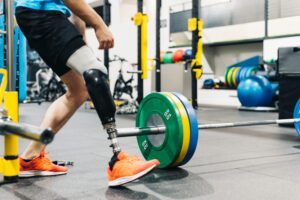Pelican Orthotics and Prosthetics designs prostheses “artificial limbs” for individuals of all ages. We treat patients who have limb loss due to trauma, disease processes such as diabetes, or who were born with an absent or under-developed limb. Our custom-fitted devices help to improve walking, running, grasping, balance, and other movements and functions. We work closely with our patients evaluating each of their individual needs and collaborating with their providers to provide the best quality of care and to assist in their road to recovery.
Our prosthetic services include:


 Upper Extremity Prosthetics
Upper Extremity Prosthetics